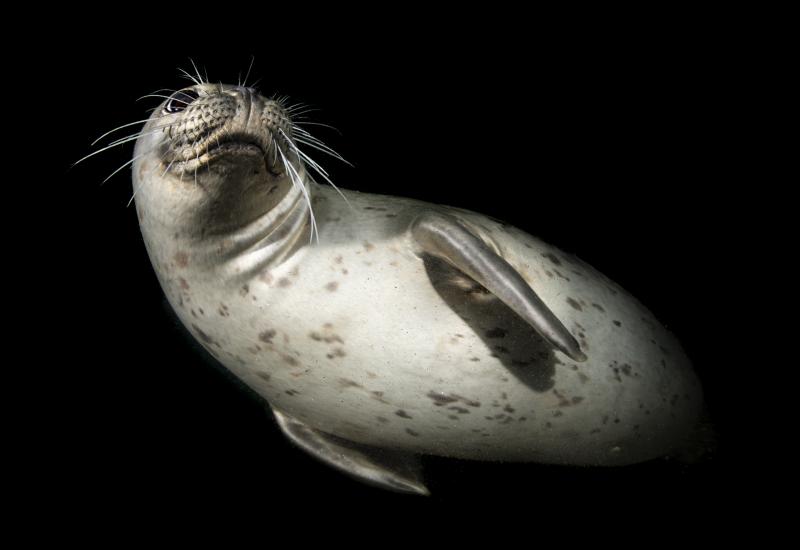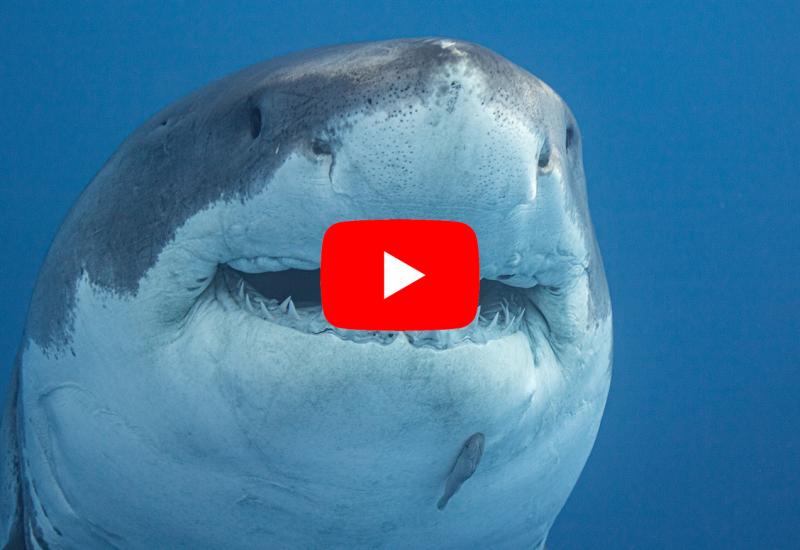5 Amazing Places to Dive in Kelp

Catalina Dive Local photo
Abi Smigel Mullens
California’s temperate waters are among the best in the world for kelp diving
Practically all along the Golden State’s entire 840-mile-long Pacific coast, divers can find a place to get wet. The water’s cold and currents and tides can be tricky, but the payoff can be huge: Whales and sharks love these waters, sea lions and harbor seals make their home at a number of rookeries, and the kelp forests both nearshore and offshore offer the promise of unexpected surprises as well as great beauty. We can’t possibly write about them all, but here are five amazing places in California to dive in kelp.
Torqua Springs, Catalina
The southeastern waters of Santa Catalina Island first earned its diving fame as the location for the TV show Sea Hunt and was once the posh, exclusive weekend playground of Hollywood's rich and famous. Recreational divers now know it for its magnificent kelp forests, creating a magical Jack and the Beanstalk atmosphere with plentiful populations of lobster and garibaldi, the bright orange state fish, which enjoys protected status. When the waters are coolest, in the high 50s and low 60s as they are in late spring and early summer, a host of invertebrates like nudibranchs, cowries, sea cucumbers, urchins and sea stars hangs out in relatively shallow waters before retreating to colder and deeper climes in late summer. On its eastern shores alone, off its ports of Avalon and Two Harbors, this pear-shaped island with a pointy tip on its western end offers endless excitement at splendid sites in the San Pedro Channel.
For more on diving Catalina, click here.
Anacapa
The Northern Channel Islands are comprised of a group of four small islands —Anacapa, Santa Cruz, Santa Rosa and San Miguel — within the portion of the Santa Barbara Channel designated as the Channel Islands National Marine Sanctuary, which also includes Santa Barbara. The sanctuary, set aside in 1980 to protect the area's rich biodiversity, is one of California's great marine treasures. Its clear, blue waters seem almost tropical compared to colder, murkier waters up north. Jacques Cousteau has been quoted as saying that these islands feature some of the best temperate-climate diving in the world. Anacapa, which consists of three small islets, is roughly 11 miles off the coast. With average vis upward of 40 feet and temps that don't drop below about 55 degrees, this is a Northern California diver's dream. Encounters with sea lions and harbor seals are common. Underwater pinnacles are covered with abundant marine life, including strawberry anemones and a variety of nudibranchs, and you’ll find bright orange garibaldi playing hide-and-seek among the stands of kelp.
Monterey
With its plentiful kelp beds, seal and sea lion rookeries, nutrient-rich waters, colorful anemones and quality deep dives, Monterey is considered California's best cold-water diving, courtesy of the 10,663-foot-deep Monterey Bay Submarine Canyon. Current upwelling in the canyon sends cold, nutrient-rich water into the bay, fueling an explosion of marine growth. In some areas, depths can ramp up to 300 feet just a few hundred yards from shore. Deep water close to shore means great visibility because of the absence of swells. Hopkins Reef is so close to shore, you can wave to people peering from the Monterey Bay Aquarium's back deck while you're on the surface preparing to descend. The site lies just inside the boundary of the Hopkins State Marine Reserve but isn't conducive to shore diving. The best way to get here is a short boat ride from Monterey Harbor, but if you're a little more adventurous, you can paddle here by kayak. Kelp clings to the 10- to 20-foot-high, round boulders scattered about. It's calm at this site — unless the wind and swell picks up — and divers are practically guaranteed encounters with playful harbor seals here because they breed and live in a nearby rookery.
Point Lobos
What's so great about Point Lobos? Everything. There's a variety of diving: shallow reefs, deep kelp beds, walls, pinnacles, caves and sandy coves with the state's largest variety of sea stars. The swimming marine life ranges from seals, sea lions and otters to torpedo rays, rockfish and lingcod. The shore diving couldn't be easier; there's no surf zone to contend with or uneven sand to stumble across. And there are acres of gorgeous scenery. At Whalers Cove, a jungle of kelp ribbons is rooted in a rocky bottom substrate. It's a great area for novice and intermediate divers looking for consistently calm water, reasonable depths and a choice of shallow or deep reefs. Shafts of light penetrate the kelp forest to illuminate massive lingcod, and otters and harbor seals are common dive companions.
Big Sur
Central California's Big Sur region is a place of rugged beauty, a coastline dominated by the tree-covered peaks of the Santa Lucia Mountains. So it's no suprise that underwater, Big Sur is a wild paradise of steep marine terraces and hidden coves. Only a short drive south from Monterey, Big Sur is just remote enough to remain unspoiled. Jade Cove is actually not one but a series of coves at the edge of Los Padres National Forest, 65 miles south of Monterey. From the beach, a shallow shelf slopes gradually out through thick kelp beds that clog the coves in summer and fall.

Abi Smigel Mullens
California’s temperate waters are among the best in the world for kelp diving
Practically all along the Golden State’s entire 840-mile-long Pacific coast, divers can find a place to get wet. The water’s cold and currents and tides can be tricky, but the payoff can be huge: Whales and sharks love these waters, sea lions and harbor seals make their home at a number of rookeries, and the kelp forests both nearshore and offshore offer the promise of unexpected surprises as well as great beauty. We can’t possibly write about them all, but here are five amazing places in California to dive in kelp.
Torqua Springs, Catalina
The southeastern waters of Santa Catalina Island first earned its diving fame as the location for the TV show Sea Hunt and was once the posh, exclusive weekend playground of Hollywood's rich and famous. Recreational divers now know it for its magnificent kelp forests, creating a magical Jack and the Beanstalk atmosphere with plentiful populations of lobster and garibaldi, the bright orange state fish, which enjoys protected status. When the waters are coolest, in the high 50s and low 60s as they are in late spring and early summer, a host of invertebrates like nudibranchs, cowries, sea cucumbers, urchins and sea stars hangs out in relatively shallow waters before retreating to colder and deeper climes in late summer. On its eastern shores alone, off its ports of Avalon and Two Harbors, this pear-shaped island with a pointy tip on its western end offers endless excitement at splendid sites in the San Pedro Channel.
For more on diving Catalina, click here.
Anacapa
The Northern Channel Islands are comprised of a group of four small islands —Anacapa, Santa Cruz, Santa Rosa and San Miguel — within the portion of the Santa Barbara Channel designated as the Channel Islands National Marine Sanctuary, which also includes Santa Barbara. The sanctuary, set aside in 1980 to protect the area's rich biodiversity, is one of California's great marine treasures. Its clear, blue waters seem almost tropical compared to colder, murkier waters up north. Jacques Cousteau has been quoted as saying that these islands feature some of the best temperate-climate diving in the world. Anacapa, which consists of three small islets, is roughly 11 miles off the coast. With average vis upward of 40 feet and temps that don't drop below about 55 degrees, this is a Northern California diver's dream. Encounters with sea lions and harbor seals are common. Underwater pinnacles are covered with abundant marine life, including strawberry anemones and a variety of nudibranchs, and you’ll find bright orange garibaldi playing hide-and-seek among the stands of kelp.
Monterey
With its plentiful kelp beds, seal and sea lion rookeries, nutrient-rich waters, colorful anemones and quality deep dives, Monterey is considered California's best cold-water diving, courtesy of the 10,663-foot-deep Monterey Bay Submarine Canyon. Current upwelling in the canyon sends cold, nutrient-rich water into the bay, fueling an explosion of marine growth. In some areas, depths can ramp up to 300 feet just a few hundred yards from shore. Deep water close to shore means great visibility because of the absence of swells. Hopkins Reef is so close to shore, you can wave to people peering from the Monterey Bay Aquarium's back deck while you're on the surface preparing to descend. The site lies just inside the boundary of the Hopkins State Marine Reserve but isn't conducive to shore diving. The best way to get here is a short boat ride from Monterey Harbor, but if you're a little more adventurous, you can paddle here by kayak. Kelp clings to the 10- to 20-foot-high, round boulders scattered about. It's calm at this site — unless the wind and swell picks up — and divers are practically guaranteed encounters with playful harbor seals here because they breed and live in a nearby rookery.
Point Lobos
What's so great about Point Lobos? Everything. There's a variety of diving: shallow reefs, deep kelp beds, walls, pinnacles, caves and sandy coves with the state's largest variety of sea stars. The swimming marine life ranges from seals, sea lions and otters to torpedo rays, rockfish and lingcod. The shore diving couldn't be easier; there's no surf zone to contend with or uneven sand to stumble across. And there are acres of gorgeous scenery. At Whalers Cove, a jungle of kelp ribbons is rooted in a rocky bottom substrate. It's a great area for novice and intermediate divers looking for consistently calm water, reasonable depths and a choice of shallow or deep reefs. Shafts of light penetrate the kelp forest to illuminate massive lingcod, and otters and harbor seals are common dive companions.
Big Sur
Central California's Big Sur region is a place of rugged beauty, a coastline dominated by the tree-covered peaks of the Santa Lucia Mountains. So it's no suprise that underwater, Big Sur is a wild paradise of steep marine terraces and hidden coves. Only a short drive south from Monterey, Big Sur is just remote enough to remain unspoiled. Jade Cove is actually not one but a series of coves at the edge of Los Padres National Forest, 65 miles south of Monterey. From the beach, a shallow shelf slopes gradually out through thick kelp beds that clog the coves in summer and fall.










